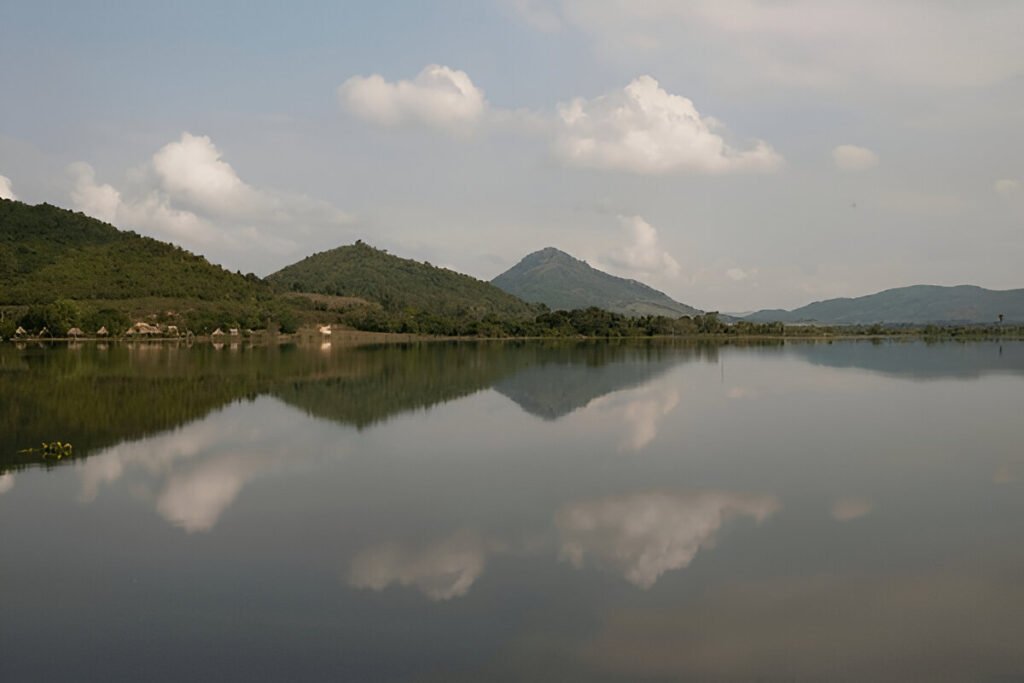Introduction:
Nestled on the tranquil island of Omishima in Japan’s Seto Inland Sea, lies the magical Oyamazumi Shrine – a timeless testament to the country’s rich samurai history. As the oldest shrine in Ehime Prefecture, it is celebrated as the home of the most extensive collection of samurai weapons and armor in Japan. A visit to this historic site not only offers a captivating insight into the ancient world of samurai warriors but also unveils the spiritual essence of the Japanese culture.
Unveiling the Magnificence of Oyamazumi Shrine
The Oyamazumi Shrine, enveloped by a 2,600-year-old sacred grove of camphor trees, exudes an ethereal charm that transports visitors back in time. The shrine complex, consisting of multiple buildings in traditional Shinto architectural style, serves as the abode of three deities believed to protect seafarers and soldiers. The most distinctive feature of the shrine, however, is its treasury – known as the Homotsukan museum. This museum treasures an unrivaled collection of samurai gear dating back to the Heian Period (794-1185), making it a veritable treasure trove for history enthusiasts.
The Homotsukan museum is a repository of over 80 national treasures, including the oldest existing samurai armor in Japan. The armor was worn by Minamoto no Yoritomo, the founder of the Kamakura shogunate, and it remains in near-perfect condition despite being more than 800 years old. The museum also boasts an impressive array of beautifully crafted swords, helmet masks, horse fittings, and other equipment that portray the grandeur of the samurai era.
A Journey through the Legacy of Japan’s Legendary Samurai
The visit to the Oyamazumi Shrine is akin to an immersive journey through the annals of Japan’s legendary samurai. Every artifact housed in the Homotsukan museum narrates a story of bravery, honor, and resilience, reflecting the spirit of the warriors who once brandished them. From the intricate designs of the armor to the razor-sharp blades of the swords, each relic provides a glimpse into the meticulous craftsmanship and superior skills of ancient Japanese artisans.
The shrine also plays host to several festivals throughout the year, with the most notable being the Omishima Taisai, a grand festival held in May. During this event, the island comes alive with traditional music, dance, and processions featuring participants dressed in Heian-era attire, recreating scenes from the life of legendary samurai. These festivals offer a unique opportunity to experience the rich cultural heritage associated with the samurai era first-hand.
Description of the Attraction:
Oyamazumi Shrine, with its ancient structures and lush surroundings, is a haven of tranquillity and spirituality. Apart from the main shrine and museum, the complex includes a secondary shrine dedicated to the deity of learning and a peaceful garden where you can immerse yourself in the serene beauty of nature. The shrine complex also features a remarkable 3,000-year-old camphor tree believed to be the abode of the shrine’s deity, offering a unique blend of natural beauty and spiritual significance.
Things to Do:
Aside from marveling at the samurai relics, visitors can partake in traditional Shinto rituals, enjoy leisurely strolls through the shrine grounds, and appreciate the seasonal blooms in the garden. During festival times, witnessing the ceremonial processions and performances is a must-do. Don’t miss the opportunity to sample Omishima’s local cuisine such as the seafood-rich ‘Omishima Nabe’; a unique hot pot dish served in many of the island’s restaurants.
Local Tips:
The best time to visit the shrine is during spring and autumn, when the weather is pleasant, and the shrine grounds are at their most beautiful. As it is a sacred site, modest dressing is recommended. Remember to respect the customs and etiquette while visiting the shrine; for instance, it’s customary to cleanse hands and mouth at the purification fountain before entering.
How to Get There:
Omishima Island is accessible by car via the Shimanami Kaido Expressway, which connects Japan’s main island of Honshu with Shikoku. Alternatively, visitors can reach the island by bus from Imabari Station, which takes approximately one hour. Upon reaching Omishima, the shrine is just a short walk from the bus stop.
Nearby Attractions:
While on Omishima Island, consider visiting the Toyo Ito Museum of Architecture, designed by the Pritzker Prize-winning architect Toyo Ito. The island also offers several hiking trails and cycling routes, providing breathtaking views of the Seto Inland Sea.
Conclusion:
The Oyamazumi Shrine serves as more than just a historical site; it’s a journey through time and a celebration of Japan’s legendary samurai. Whether you’re a history aficionado, a spiritual seeker, or simply a curious traveler, a visit to this enchanting shrine promises a truly unforgettable experience that transcends the boundaries of time.






